In the grand saga of Earth’s history, few creatures have captured our imaginations quite like the T-Rex. This mighty dinosaur, with its fearsome jaws and towering presence, roamed the prehistoric landscapes as an apex predator. However, the reign of the T-Rex eventually came to an end, and new beasts emerged to take its place at the top of the food chain. Let’s take a journey back in time to discover ten incredible prehistoric creatures that stepped into the spotlight after the T-Rex had its curtain call. From colossal marine reptiles to massive mammals, these beasts ruled their domains with unrivaled power and presence.
1. Megalodon
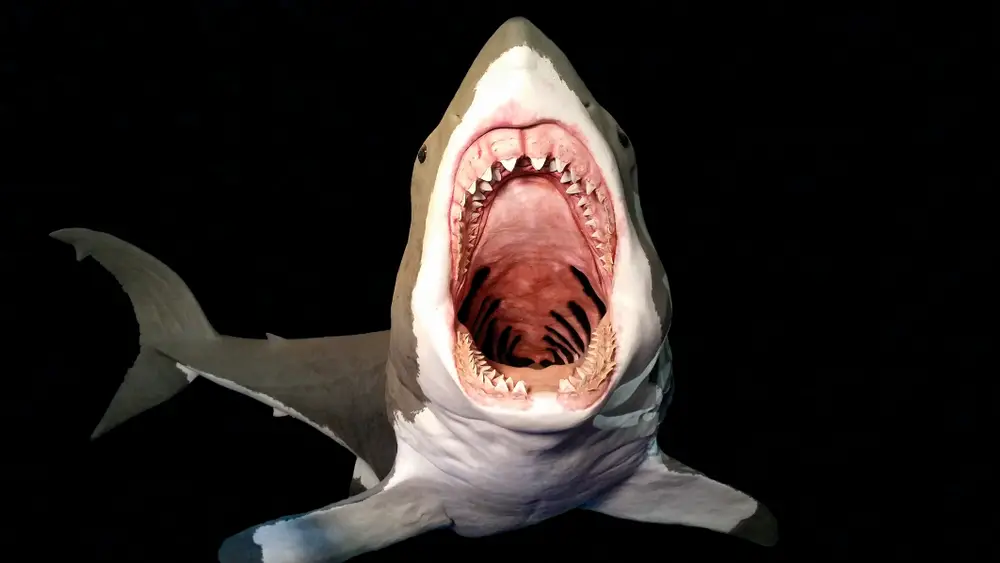
Meet Megalodon, the gigantic prehistoric shark that would have made even the T-Rex tremble if they’d ever crossed paths. This oceanic titan ruled the seas millions of years after the dinosaurs. With teeth the size of a human hand, Megalodon could easily crunch through bone and armor alike. According to the Smithsonian Institution, it measured up to 60 feet long, making it one of the largest predators ever known. Unlike the T-Rex, Megalodon dominated the oceans, taking down massive prey with ease.
In its prime, Megalodon feasted on whales and other large marine creatures. Its sheer size made it an apex predator, capable of outmatching any contemporary sea dweller. Scientists believe that Megalodon’s hunting grounds spanned the globe, from the warm coastal waters to the cooler depths. Its legacy still lingers, with teeth washing up on beaches, reminding us of its formidable presence. As the oceans changed, however, Megalodon eventually faced extinction, but its awe-inspiring reputation remains unsinkable.
2. Sarcosuchus
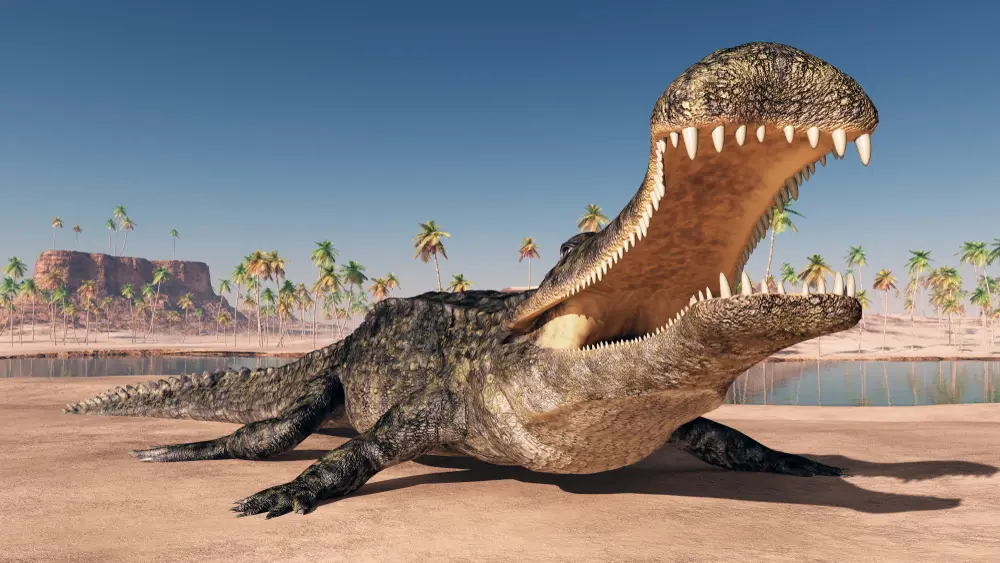
When you think of crocodiles today, the word “massive” might not come to mind. But Sarcosuchus, often known as the “SuperCroc,” was an ancient leviathan that dwarfed its modern relatives. According to National Geographic, Sarcosuchus roamed the waters of what is now Africa and South America. It could grow up to 40 feet long, making it nearly double the length of today’s largest crocodiles. While the T-Rex ruled the land, Sarcosuchus was the undisputed king of the waterways.
With a jaw filled with over 100 teeth, Sarcosuchus could take down sizeable prey, including dinosaurs that wandered too close to the water’s edge. Its robust body and powerful tail allowed it to stalk and ambush with deadly efficiency. Unlike the T-Rex, this creature had the patience of a skilled predator, waiting for the perfect moment to strike. It’s fascinating to think about a time when such enormous reptiles existed, towering over anything else in their domain. Sarcosuchus eventually saw its reign end as the continents shifted and environments changed, but it remains a testament to the diversity of prehistoric life.
3. Quetzalcoatlus
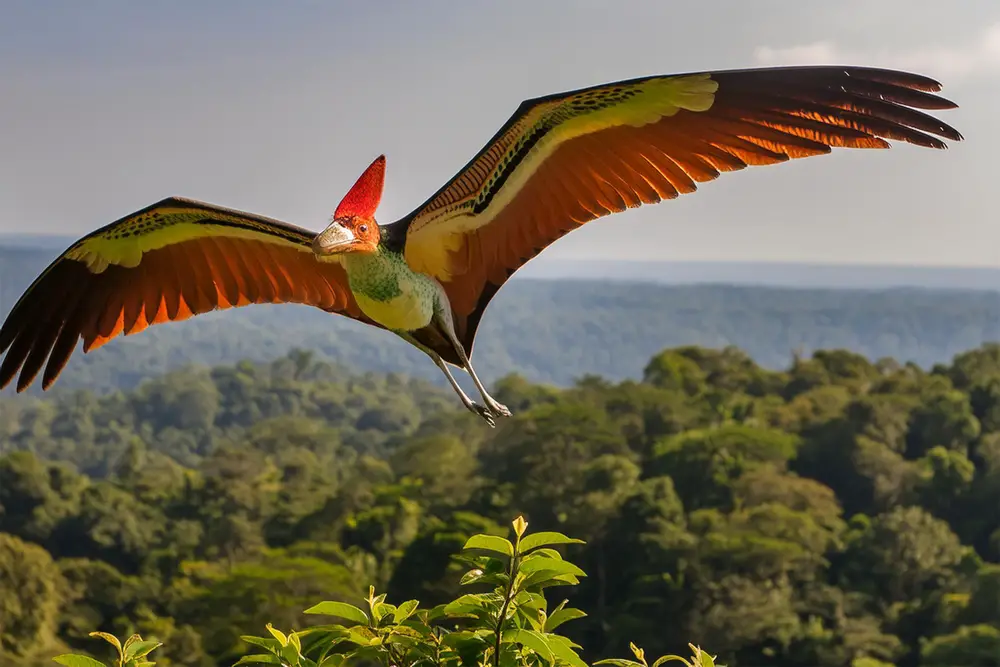
Flying high above the prehistoric landscape, Quetzalcoatlus was a ruler of the skies. This was no ordinary pterosaur; it boasted a wingspan that could reach up to 36 feet, making it one of the largest flying animals ever. Imagine a creature with the wingspan of a small airplane gliding through the skies—it’s a bit mind-boggling, right? Unlike the T-Rex that stomped around on the ground, Quetzalcoatlus had the world from a bird’s-eye view. Its long, pointed beak and slender neck were perfect for snatching up prey, whether it was fish from the water or small animals from the ground.
Quetzalcoatlus was a master of efficiency, using thermal updrafts to glide effortlessly for long distances. This gave it a strategic advantage, allowing it to survey vast areas for food. Its lightweight, hollow bones made it an agile flyer despite its size, a feat that’s still admired by scientists today. This creature’s ability to soar at such heights likely helped it avoid many predators and competitors on land. While its time eventually passed, Quetzalcoatlus left an indelible mark on the prehistoric skies it once ruled.
4. Argentinosaurus
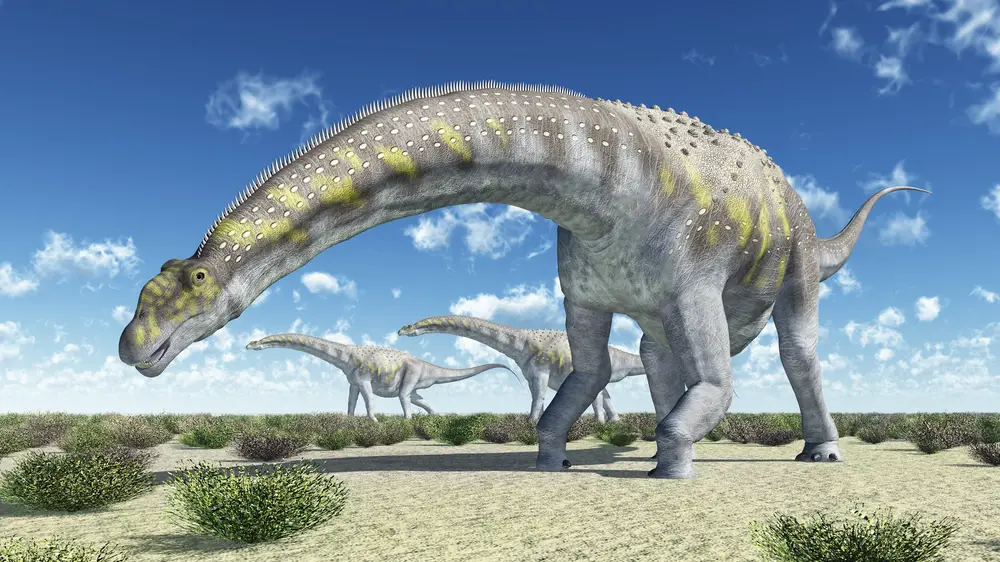
Argentinosaurus, the giant among giants, was a titanic sauropod that roamed the Earth long after the T-Rex had vanished. This colossal dinosaur could stretch up to 100 feet in length and weigh as much as 100 tons. While the T-Rex had sheer ferocity, Argentinosaurus had size and strength on its side. Imagine a creature so massive that it could shake the ground with every step; that was Argentinosaurus. It lived in what is now Argentina during the Cretaceous period, a true testament to the power of herbivorous dinosaurs.
Despite its size, Argentinosaurus was a gentle giant, grazing on vast amounts of vegetation to sustain its massive body. Its long neck allowed it to reach high into the trees for leaves that other herbivores couldn’t access. This gave it a distinct advantage in its ecosystem, ensuring it had enough food to thrive. Its sheer size acted as a deterrent against predators, making it relatively safe from attack. As one of the largest land animals ever, Argentinosaurus symbolizes the incredible diversity and adaptability of prehistoric life.
5. Smilodon
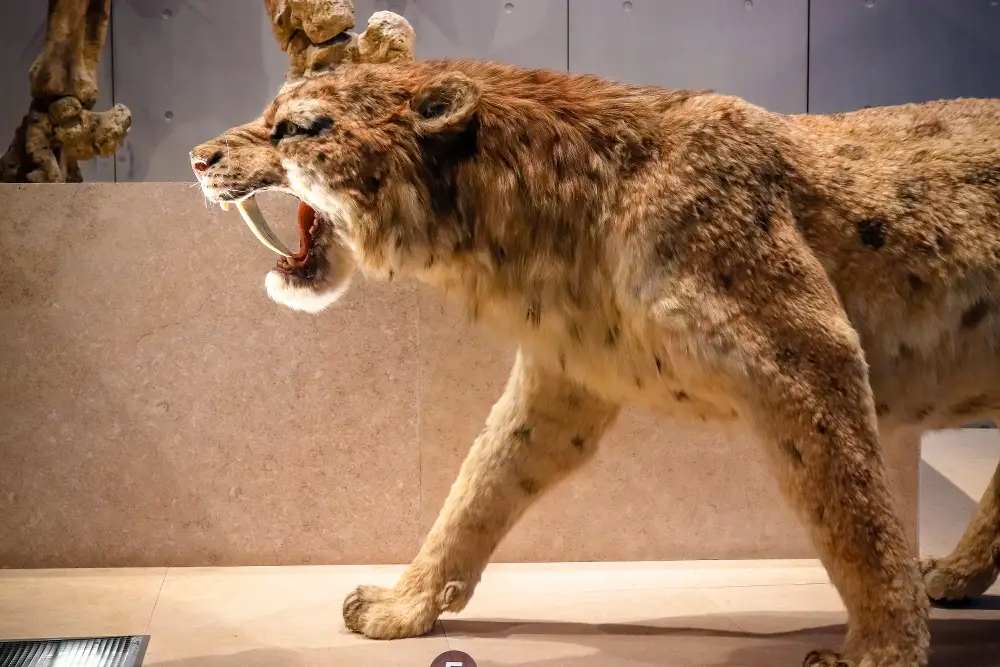
Fast forward to a time long after the dinosaurs, and you’d meet Smilodon, the iconic saber-toothed cat. Known for its elongated canines, Smilodon was a formidable predator of the Pleistocene epoch. It didn’t rely on raw size like the T-Rex, but rather on stealth and power. With sharp senses and a muscular build, Smilodon was an apex predator in its own right, hunting large mammals such as bison and camels. Its most distinctive feature, those massive saber teeth, were perfect for delivering a lethal bite.
Smilodon likely used ambush tactics, stalking its prey before pouncing with precision and force. Its strong forelimbs and sharp claws could hold down struggling prey, making escape nearly impossible. Unlike the dinosaurs, Smilodon lived during a time when the Earth was undergoing significant climatic changes. This adaptability was crucial for survival, but eventually, environmental shifts led to its extinction. Despite this, Smilodon remains a symbol of prehistoric fierceness and tenacity.
6. Giganotosaurus
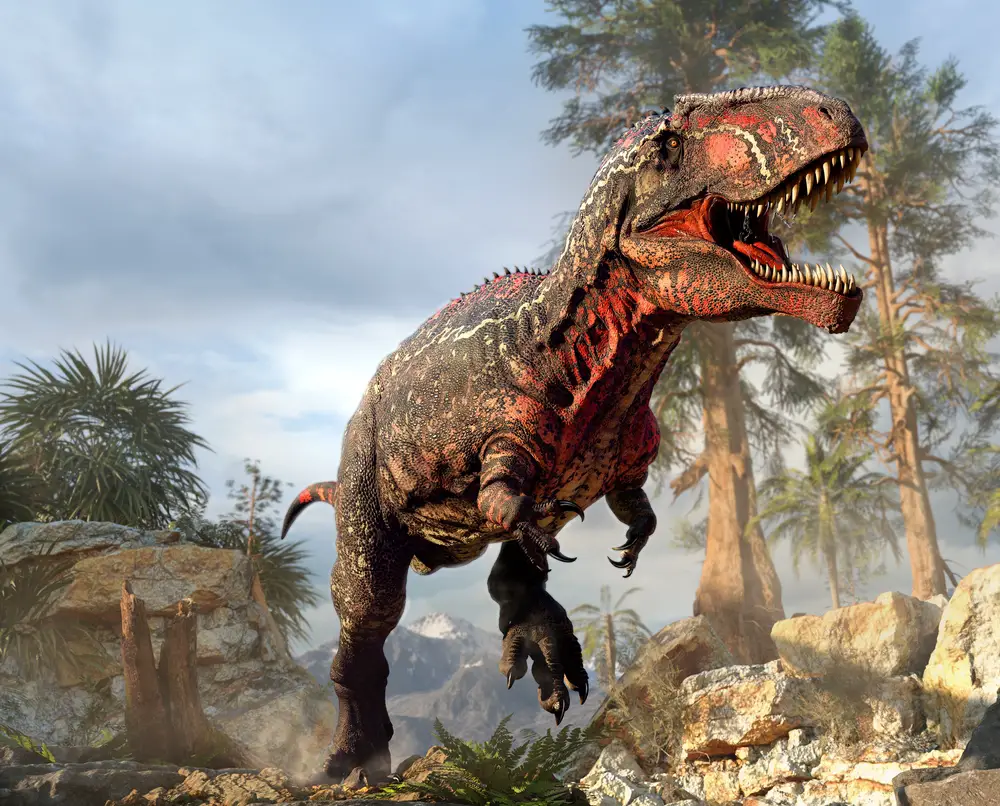
If you thought the T-Rex was the only giant predator in town, meet Giganotosaurus. This behemoth roamed South America about 98 million years ago, and it was a force to be reckoned with. In terms of size, Giganotosaurus was right up there with the T-Rex, if not a bit larger. It could grow up to 43 feet long and weighed around 8 tons. With its massive jaws and serrated teeth, it was well-equipped to hunt large sauropods that shared its environment.
Unlike the T-Rex, Giganotosaurus had a slightly smaller brain, which might suggest it wasn’t quite as cunning a hunter. However, its sheer power and speed more than made up for it on the hunt. This dinosaur was agile for its size, allowing it to take down prey effectively. The Giganotosaurus was part of a lineage that thrived in a world rich with life, where every hunt was a test of survival. Eventually, like many other dinosaurs, it faced extinction, but its legacy as a top predator is undeniable.
7. Deinosuchus
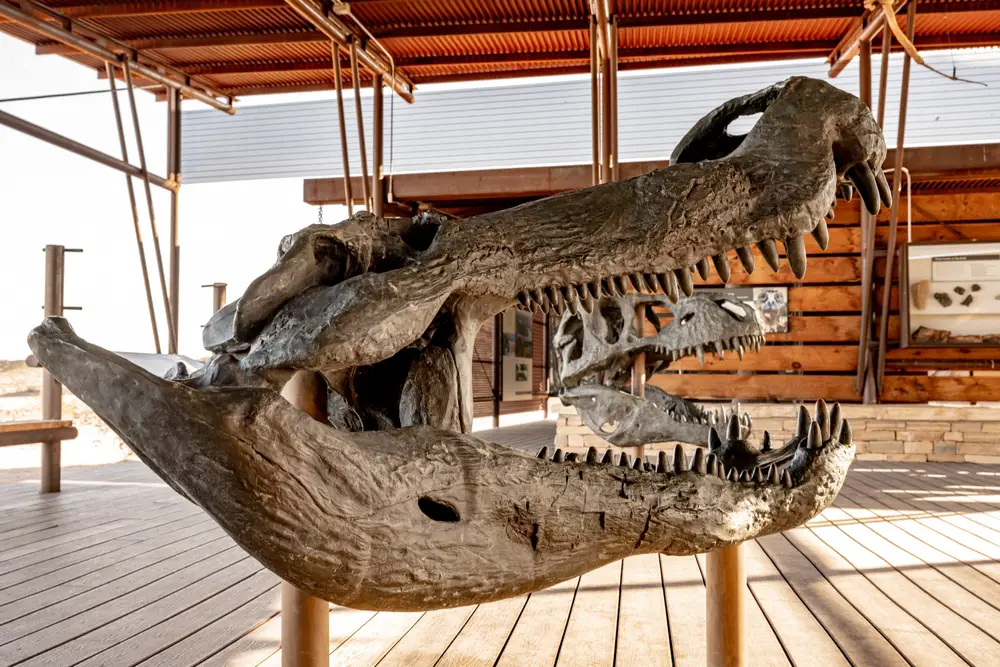
If you think modern crocodiles are fearsome, wait until you hear about Deinosuchus. This colossal croc was alive during the late Cretaceous period, around the same time as the T-Rex. With a length of up to 35 feet, Deinosuchus was a formidable force in the ancient waters. Unlike its modern relatives, it had a much broader, more robust skull, capable of crushing bone with ease. While the T-Rex was terrorizing the land, Deinosuchus made sure nothing was safe in the rivers and swamps.
Its diet likely consisted of large fish, turtles, and even dinosaurs that wandered too close to the water’s edge. This ancient giant had a tough, scaly hide, providing armor against any potential threats. Its powerful tail was not only a tool for swift swimming but also a weapon against prey. Deinosuchus demonstrated the diverse forms of ancient life, showcasing nature’s adaptability and resilience. As the world changed, it eventually vanished, but not before leaving behind a legacy of dominance in its aquatic realm.
8. Paraceratherium
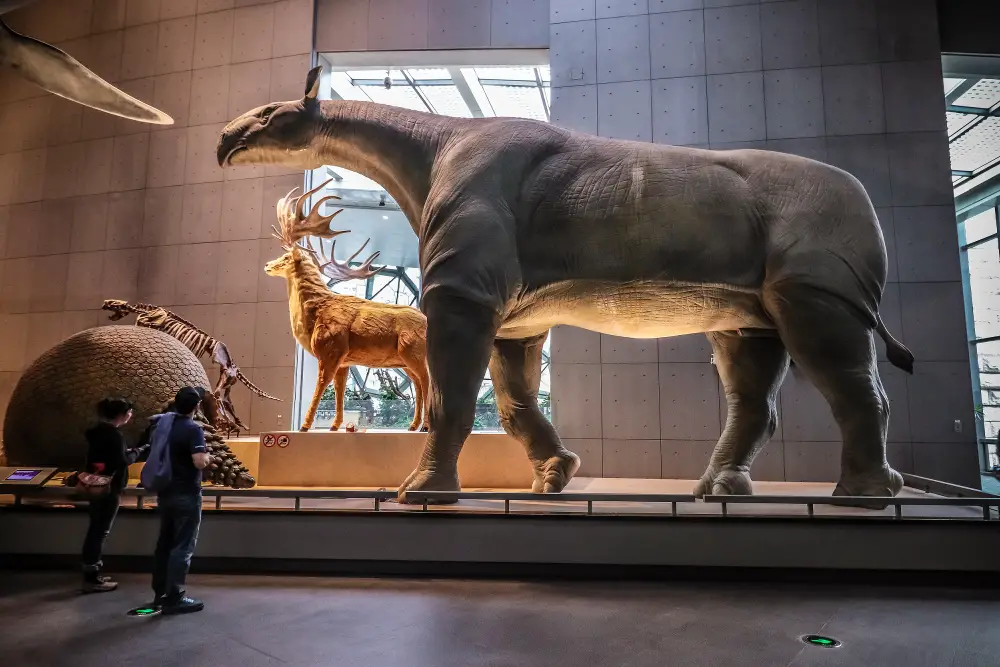
Picture a rhinoceros, but super-sized, and you’ll have a glimpse of Paraceratherium. This massive mammal lived long after the age of dinosaurs, roaming the Earth about 34 million years ago. As one of the largest land mammals to ever exist, it could reach heights of 16 feet and weigh around 20 tons. Unlike the T-Rex, which used its jaws as weapons, Paraceratherium was an herbivore. Its towering stature allowed it to reach leaves high up in the trees, much like the giraffes we see today.
Paraceratherium had a long neck and a large, prehensile lip, ideal for grabbing foliage. Despite its size, it was likely a relatively gentle creature, focusing on grazing rather than confrontation. Its sheer size would have kept most predators at bay, just as a deterrent. It lived in a time when open woodlands and savannas were common, providing ample food sources. As climates and ecosystems evolved, Paraceratherium eventually disappeared, but it remains a fascinating chapter in the story of life on Earth.
9. Mosasaurus
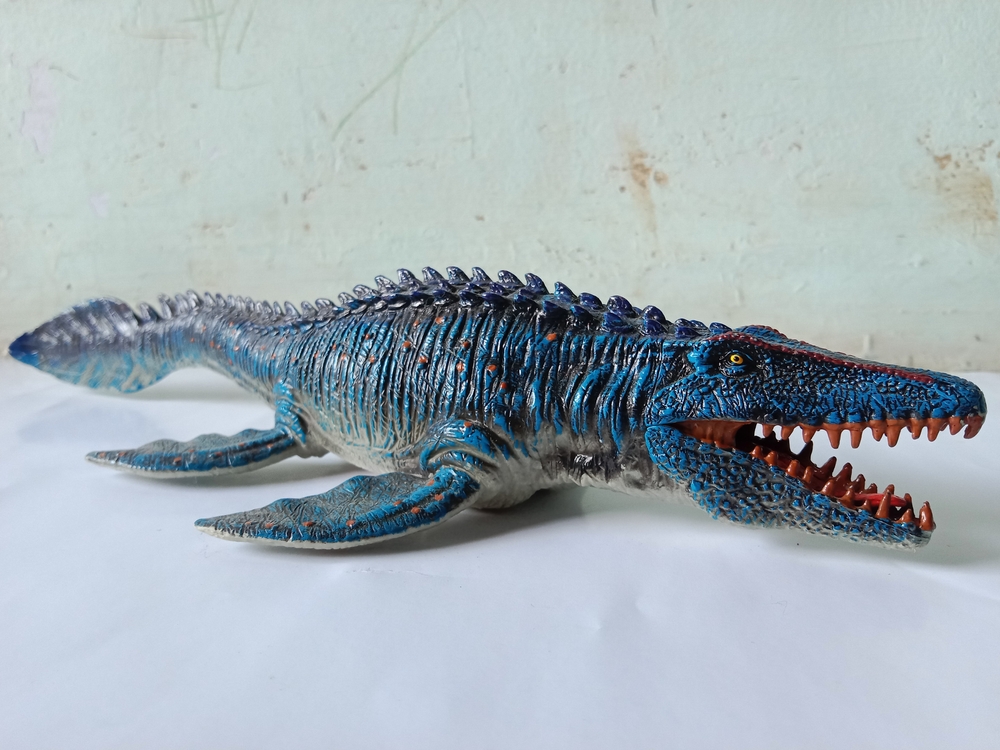
Dive into the ancient seas, and you’d find Mosasaurus, a marine reptile that ruled the waters after the dinosaurs. Living during the late Cretaceous period, it grew up to 56 feet in length and was a top predator in its oceanic world. Unlike the T-Rex, which dominated the land, Mosasaurus was an aquatic powerhouse. It had a streamlined body and powerful tail, enabling it to move swiftly through the water. Its jaws were lined with sharp teeth, perfect for catching fish, squid, and even other reptiles.
Mosasaurus was part of a larger group of marine reptiles known as mosasaurs, which thrived in the Cretaceous seas. It had flippers instead of limbs, making it an adept swimmer capable of covering large distances. This creature filled a critical niche in the marine ecosystem, much like the great white shark does today. As the Cretaceous period ended, so did the reign of Mosasaurus, but its legacy survives in the fossils that continue to intrigue paleontologists. Its existence is a reminder of the diverse and fascinating life that once thrived in Earth’s waters.
10. Gigantopithecus
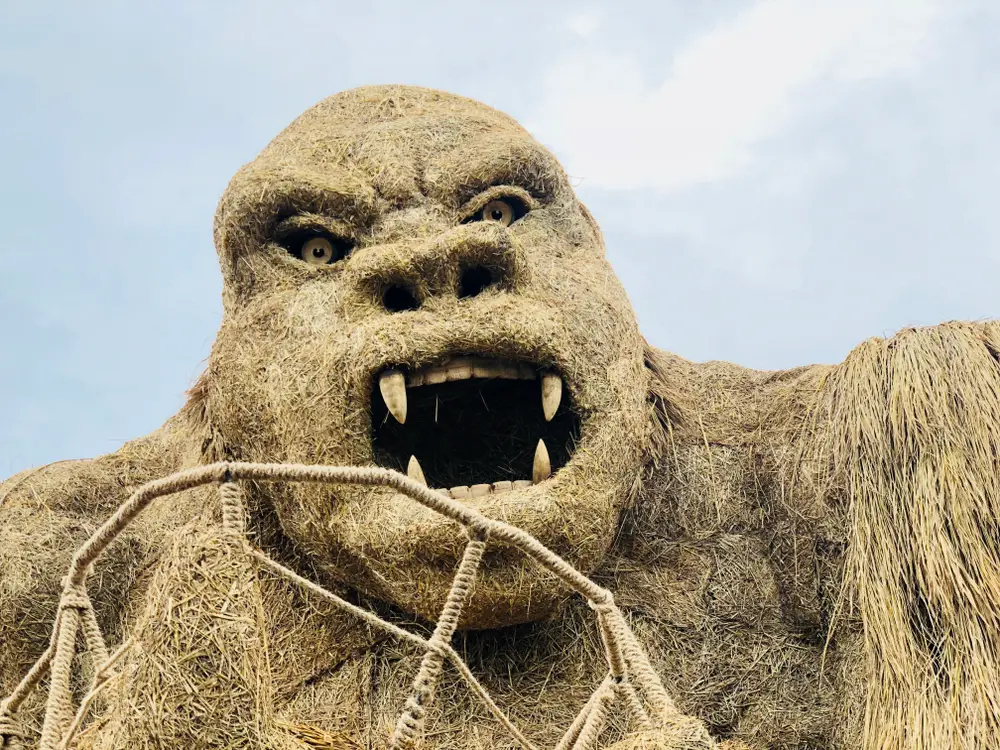
Venturing into the world of primates, Gigantopithecus was a giant among them. This enormous ape lived in the forests of what is now Southeast Asia around 1 million years ago. Towering at an estimated 10 feet tall and weighing up to 1,200 pounds, it was a gentle giant. Unlike the T-Rex, which was all about predation, Gigantopithecus was a herbivore, munching on bamboo and other plant matter. Its massive build suggests that it was well-equipped to fend off predators if necessary.
Gigantopithecus had large, thick molars suitable for grinding tough vegetation, a trait it shares with modern gorillas. It likely lived a peaceful existence, foraging for food and navigating its forested habitat. This giant ape’s size would have been an advantage in intimidating smaller competitors for resources. However, environmental changes and competition with other species eventually led to its extinction. Its legacy lives on in the myths and legends of giant apes, capturing the human imagination and reminding us of the remarkable creatures that once walked the Earth.
